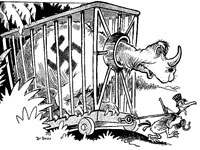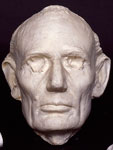While your students likely won't see Timur Bekmambetov's film Abraham Lincoln: Vampire Hunter in theatres (it's rated R), there's a chance they might read the book it's based on.
In his mashup of historical details and fictional supernatural conspiracy, author Seth Grahame-Smith imagines Abraham Lincoln's life as a secret quest to rid the U.S. of vampires. As Lincoln grows up and becomes a lawyer, politician, and, finally, president, he slays monsters that threaten the safety of his friends, family, and country.
What can teachers do with this meshing of history and fiction? First, remind students that historical fiction presents the past as part of a larger story. Abraham Lincoln: Vampire Hunter, with vampires fighting in the Civil War, may be more obvious than most, but even the most carefully-crafted story, based on primary sources and taking multiple perspectives into account, should be examined as historical fiction.
Remind students to think critically about representations of the past.
Authors must select a viewpoint, develop their plot, and try to make sense of existing secondary and primary sources in a way that engages readers in a tale with a beginning and an end. Students should approach any work of historical fiction with a critical eye.
Second, Abraham Lincoln: Vampire Hunter presents an opportunity to talk to students about assessing secondary and primary sources. Grahame-Smith writes his novel in the style of a biography, including verified facts from Lincoln's life and quotations from genuine primary sources alongside horror-story fantasy, invented "excerpts" from the fictional "secret diaries" of Abraham Lincoln, and doctored photographs.
Ask students to think about the tricks Grahame-Smith uses to make his story seem true.
Ask students to think about the tricks Grahame-Smith uses to make his story seem true. When he "quotes" from Lincoln's imaginary vampire-hunting diaries, he formats the imaginary quotes just like his quotes from real primary sources. He includes misspellings to make them appear unedited, and he adds ellipses to make it look like he's taking the "quotes" from longer documents. He adds footnotes to explain details in the fictional sources, as though he were a historian explaining background or additional information.
So, how can students know if a detail or event reported as "true" in a story like this is true? Do your research! Look to primary sources and reputable secondary sources for confirmation.
For instance, did the young Lincoln actually win the loyalty of the "Clary's Grove Boys" by beating their leader in a fight? Is this story mentioned in any biographies or other secondary sources? Do any firsthand witnesses describe it? How about Lincoln himself?
Abraham Lincoln: Vampire Hunter is a flight of fantasy, but its over-the-top combination of history and fiction can help remind students to always think historically. Never take anything you read for granted (with or without vampires)!

